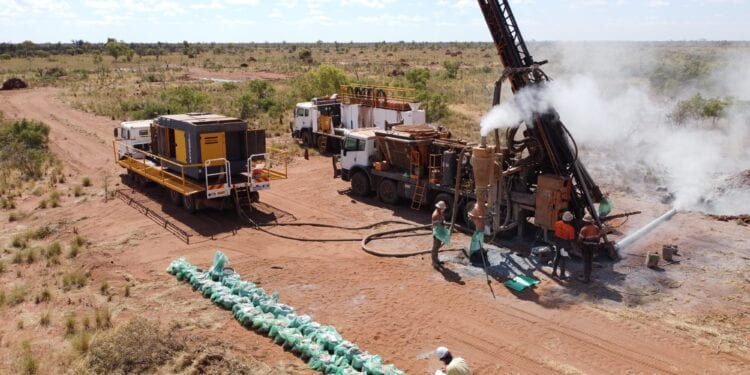Targeting Rare Earths In Western Australia
Australian rare earths explorer, RareX Limited (ASX: REE) has engaged drilling contractors to commence its maiden drilling program at the recently acquired Weld North Project in Western Australia in November.
The Weld North Project is located north of Laverton and covers a large, circular magnetic anomaly prospective for a carbonatite intrusive complex similar to those that host the majority of the world’s existing rare earth element production – including the world-class Mt Weld mine, owned by Lynas Corporation Limited, and RareX’s Cummins Range Rare Earth Project.
The Weld North Project is defined by a circular magnetic anomaly target located entirely within RareX’s Exploration Licence Application E38/3455.
It is located 84km directly north of the Mt Weld carbonatite-hosted rare earth element (REE) deposit held by Lynas Corporation Limited (ASX: LYC, Mkt Cap A$1.5bn).
The Lynas Mt Weld carbonatite complex forms a strong circular magnetic anomaly with a diameter of 4km and which hosts a total rare earth element oxide (TREO) resource of 54.5 Mt at 5.4% TREO for 2.8Mt of contained rare earth oxide (REO) (2.5% TREO cut-off) (source: Lynas Corporation Limited 2020 Annual Report announced to the ASX on 6 October 2020).
By comparison, the Weld North circular magnetic anomaly has a diameter of 5km with a similar magnetic anomaly pattern to the Mt Weld carbonatite complex (Figures 2 and 3), where the magnetic anomaly amplitude is less pronounced – indicating less magnetite content of the rocks.
This characteristic may not have a bearing on the REE potential of the target, since many REE-bearing carbonatite phases are non-magnetic. For example, the majority of the current RareX Cummins Range REE resource is closely associated with non-magnetic carbonatite intrusive rocks and shear zones within a circular diatreme structure (see REE ASX announcement dated 12 November 2019).
It is possible that the Weld North magnetic anomaly is caused by an Archean granitic intrusion. Surface inspection of the Weld North intrusion did not result in any positive identification of a magnetic source, nor identification of any primary geology due to the significant sandy cover sequence.
Executive Director, Jeremy Robinson, said RareX plans to undertake aircore drilling to test under the cover sequence, to assess if the source of the magnetic anomaly is caused by a carbonatite intrusion, similar to Mt Weld, or a granitic intrusion.
The circular shape and size comparison to Mt Weld indicates that the Weld North magnetic anomaly is highly prospective for a significant rare earths discovery
Mr Robinson said RareX is committed to progressing exciting greenfields exploration targets like Weld North as it continues to progress its flagship Cummins Range Rare Earths Project towards production.












